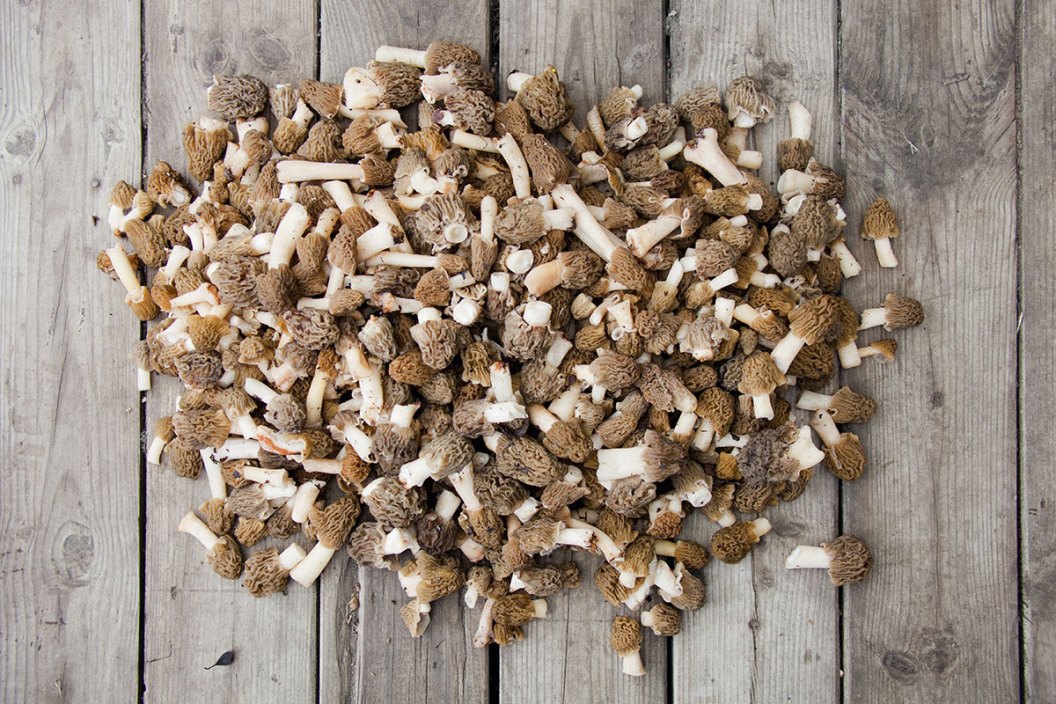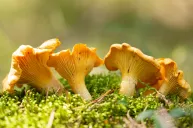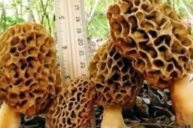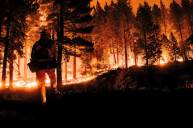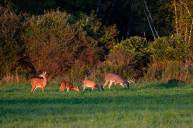Get ready to fill your basket with tasty morels!
A while back we wrote a bullet list of ten things to help you in your quest for finding morel mushrooms. Here we'll explain and expand on that list, giving you more details on each point.
You'll be a more successful morel mushroom hunter if you understand these basic principles.
While there are different variations of the morel mushroom—black, gray, and yellow morels—and each may have its own small environmental characteristics that favor its appearance, for our purposes we're going to ignore that and treat them all the same. The differences are relatively insignificant in that any morel is a good morel and is worthy of harvest.
These morel hunting tips should generally apply across the board, more or less.
1. Soil temperature is the key to morels blooming
This list contains the factors that contribute to finding the first morels blooming when and where they bloom. But, in my opinion, the two biggest qualifiers that absolutely must be present for morels to appear are temperature and moisture.
We've all seen morels grow in the most unexpected locations, so while things like their association with certain trees and the physical content of the soil can and do have an impact, nothing is more important than temperature and moisture. Of these two, temperature takes precedence.
Air and soil temperatures are of course linked. The warmer the air, the warmer the soil will be. But a more reliable predictor of when the first morels will appear is soil temperature.
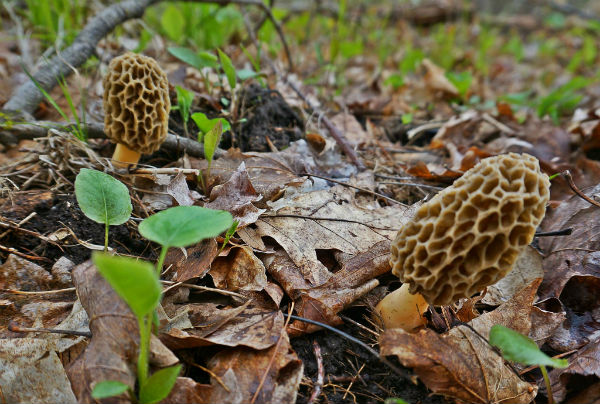
"Degree days" is a fairly reliable omen of when morels will first appear, and how long the morel season will be. Degree days are calculated—for both air and soil—as the number of days above freezing during the year, combined with the number of degrees above freezing, to calculate a single metric.
Generally speaking, soil warming from around 400-520 accumulated degrees Farenheit over a 20-30 day period (degree days) seems to offer the best opportunity for morels to appear. The more degree days that occur before morels bloom, generally the longer the season will be.
If the soil temperature increases rapidly, morels will likely appear quickly but the season will be short. If soil temperatures accumulate more slowly it will take longer for morels to appear, but the season should last longer. When the soil reaches a consistent temperature of around 50-53 degrees, morels should begin to appear.
It is recommended that you use a digital soil thermometer. Consistency is best, so take the temperature daily and record your readings. Take it in the same spots, at the same time and at the same depth (2 to 6 inches).
2. Focus on south facing slopes
Early in the season the sun's warming rays will heat up the southern side of hills and slopes while seeming to ignore northern slopes. All we need to do to verify this assertion is look at our own homes. Unless you've got some obstruction shading the southern side of your home you will notice that the south side clears itself of snow and becomes greener more quickly than the north side.
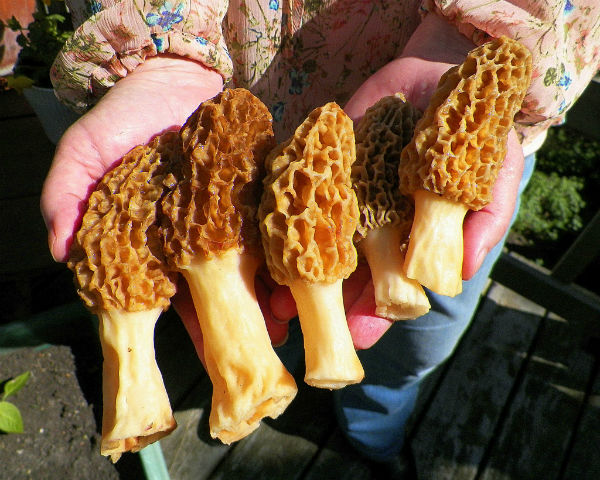
This has a direct impact on the greater warmth of both the air and the soil on southern slopes. This also applies to the slightest of inclines. It seems doubtful that wherever you might hunt morels would be free of hills, slopes or undulations, but if that is the case, concentrate on areas just north of southside roads, trails or open spots—wherever the sun's light has fewer trees and obstructions to pass through before hitting the earth.
I recall one particularly flat woodlot I passed by. I was walking an east to west gravel road when I noticed a large morel in the leaf litter just outside the northern edge of the trail. I scanned the immediate area and quickly found a flush of morels.
But walking to the other side of the road and searching on the exact opposite side, I found only two wild mushrooms. It occurred to me that the sun was able to warm the forest floor on north side of the trail more consistently than the other, simply because there were fewer trees to impede the sun's rays.
3. Become an expert in tree identification
A person that is knowledgeable in the study of trees is known as a dendrologist. This is a great skill to develop, regardless of whether or not you're into morel mushroom hunting. If you're any kind of outdoorsman or woman, knowing the trees in your area will stand you in good stead.
It will provide you with countless benefits and will increase your overall knowledge of the forest and the creatures who live there. Plus it's a lot of fun!
Morels are often associated with a few trees in particular: Elm, ash, poplar and apple trees. But we've also found them under coniferous pines, and near dogwood, maple, and oak trees. So it's not a hard and fast rule, but when hunting morels, you want to play the percentages and cover as much productive ground as possible. Being able to identify trees that share a symbiotic relationship with morels will help you do that.
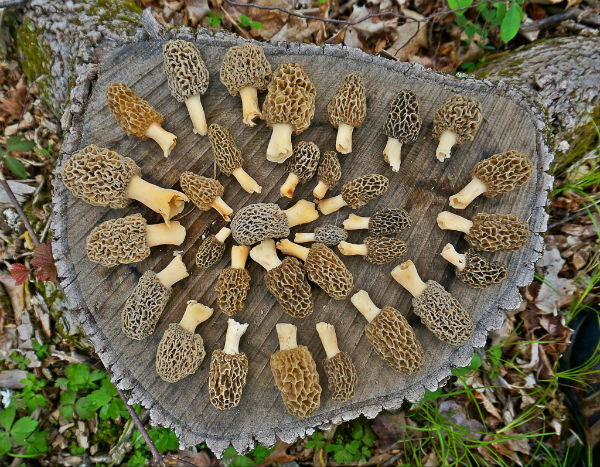
And you should be able to ID trees during any time of year, with or without leaves. Become skilled in naming trees by bark, buds, leaves, seeds, form, height, and location. It can only help and will enhance your appreciation for everything in the forest.
4. Be Joe Dirt
Again, morels will occasionally pop up in the most unexpected places. I've found them growing in gravel, in sandy nutrient-deficient soil, and even in polluted city yards where you wouldn't expect to find a dandelion. But they prefer rich, loamy soil. Loam soil is the kind of earth you might find in creek bottoms or near areas that occasionally get wet but don't stay saturated.
Loam is often referred to as a combination soil and an ideal plant growing medium. It combines clay, sand, silt, and decaying matter. In more or less equal proportions, these materials give you the benefit of each with few of the drawbacks of any particular one. Loam is nutrient rich, has a fair dose of calcium and/or lime, is fairly dense, and has both good water retaining and water drainage qualities.
The proportion of sand helps with drainage and keeps the soil from compacting too much, while the clay and silt retain moisture. Decaying matter helps supply nutrients. It's the kind of dirt that you can easily break up with your hands, yet if you squeeze it it will hold together pretty well.
Coincidentally, the kinds of trees that morels are often associated with also tend to prefer loamy soil.
5. Celebrate ground disturbed by fire, flood, or machinery
There is something about a good forest fire that seems to activate the appearance of morels. It's probably because a fire facilitates the release of nutrients back into the soil.
There are websites and maps of current and past burn sites that can help you locate prime spots for potential morel flushes. Usually it takes a year or two following a fire for morels to fully bloom in such areas.
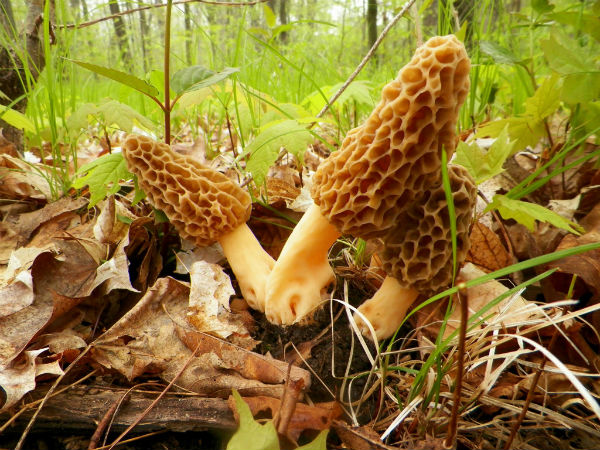
Areas that have been recently logged—in the past year or two—are also well worth checking. Logging equipment and heavy machinery have the effect of tilling the soil and redistributing nutrients, and logged woodlots also open up an area to the warming rays of the sun.
Morels also like areas that have also been disturbed by flooding. Flooding tends to bring a whole lot of nutrient-rich water to the ground, as well as swelling the earth and releasing even more goodies that spark morels into appearing.
But again, morels don't like waterlogged areas. Wait a little while to check flooded woodlots, after the waters have receded and the soil has warmed up to a morel conducive temperature.
6. Nothing like a good rain after a dry spell
There really is nothing like a good spring rain following an extended dry period. If you're having a spring where the temperature of both air and soil is rising steadily but it's been dry, sometimes all you need is a good rain to get the party started.
When conditions are like this, it seems like the day or two following a spring rain flips the switch on the morels. They almost literally explode with growth.
An area that was barren three days earlier will suddenly be flush with dozens of morels. It can really be a boom period and you'll be kicking yourself if you miss it (Especially after all of your online friends start sharing pictures of the baskets full of morels they plucked after a good rain).
Just like everything with morels, it depends on conditions and timing. But it's something to be aware of and ready for.
7. Make a day of it
We don't always have the time or opportunity to hunt morels at our leisure. The season is relatively short and there can be a lot of ground to cover.
But if you can, I would strongly suggest you try to spend at least one or two full days tramping through the woods with a backpack looking for the little beasties. Explore new areas and keep your eyes open for more than morels.
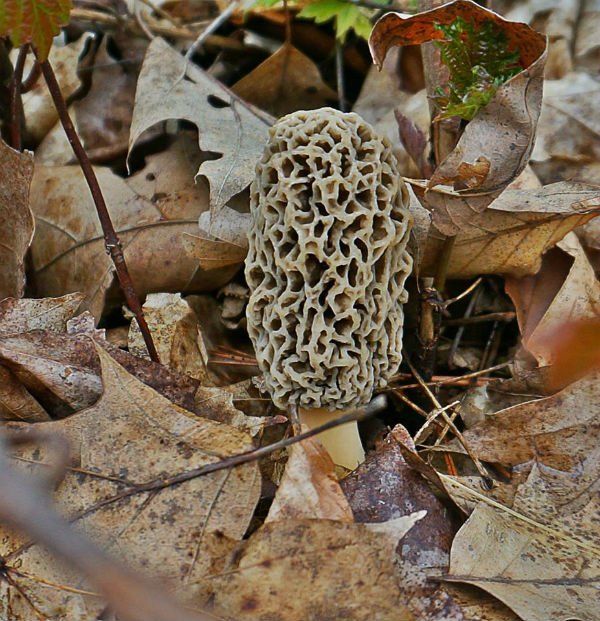
I have had some of my most enjoyable and memorable mushroom hunting experiences on days that I was prepared to be out all day.
A day pack containing a small camp stove or fire making supplies, a pan, and a tin of butter can make a day finding even just a couple of morels a heavenly experience. Somehow they taste even better when cooked in the field.
Always bring a sandwich or something else to eat, just in case you come up goose eggs with the morels. But if you know your wild edibles, you should be able to enjoy a repast from whatever you find during your trek.
Ostrich fern fiddleheads and ramps both appear around the same time as morels, as do many other wild edibles. You may even find some labrador or chaga fungus to chip from a birch tree and make tea with.
The point is, don't hustle into the woods to simply try to fill your bag or basket, at least not every time. Make a point to connect yourself to the forest, to the life and the sustenance around you.
It's awesome to come home with a bag full of morels after a quick hour or two of intense hunting, but it's also awesome to spend the day clearing the cobwebs and relaxing in a tree-filled cathedral.
8. If you don't take a picture did it really happen?
A camera is a wonderful item to bring with you when foraging or hunting morels. Remember to take some photographs of your morel finds and other cool things you see. And learn to take good photos, ones you'll be proud to share.
These days most smartphones have excellent cameras. You don't want to have your head buried in your phone while in the woods, so wait to share most of your pics when you get home.
Photos are like memory spark plugs. Just like pics you take of fish you catch or grouse you shoot during the hunting season, photographs help you remember that special day you spent in the forest and the delicious morels you ate long after they left the frying pan.
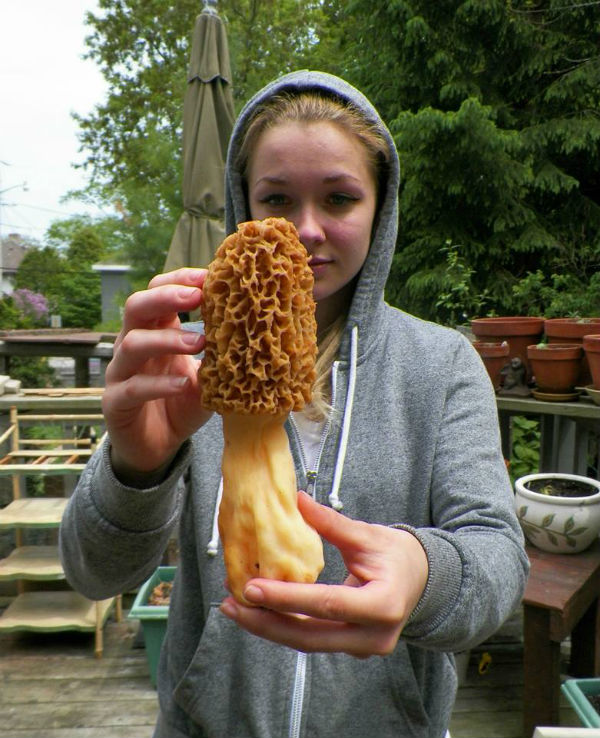
Also, keep a journal of your morel adventures. Use it to track temperatures, time of year, rainfall, locations, and more. It will end up being extremely useful to you when the morel mushroom season rolls around each year.
9. We all hate ticks
Ticks are unfortunately a part of trekking into the woods and fields that we all must be aware of and prepare for.
There are several illnesses that the nasty little parasites can infect us with, some which can be quite serious. These include Lyme disease, babesiosis, ehrlichiosis, Rocky Mountain Spotted Fever, anaplasmosis, Tick-Borne Relapsing Fever, tularemia, Colorado tick fever, and Powassan encephalitis.
More than 300,000 people are infected with Lyme disease every year in the United States. Other tick-borne diseases also seem to be on the rise across the country.
I don't mean to scare you into avoiding the woods altogether, but I do want you to prepare to stop ticks from infecting you. Fortunately, that's a pretty simple thing to do, and a taking a few precautions should put your mind at ease.
One, use a couple of anti-tick formulations any time you enter tick country. Spray your clothing with Permethrin. It's the surest chemical we currently have available to discourage ticks from latching onto your clothes. It's odorless and one application will last for quite a while, even through several washings.
Next, spray your exposed skin areas with a tick spray meant for contact with skin.

The most important step you can do is to visually check yourself in front of a full length mirror or have a partner check you when you get back home. There are a few other precautions you should be aware of but these two steps—spray and visual check—should be enough to put most tick concerns to rest.
Ticks are a hassle, but they're a simple adversary to prepare for.
10. Join a morel club or group
This one will increase your enjoyment and maybe your knowledge of morels. Every state where morels grow has a Facebook morel mushroom group. These groups are populated with like-minded folks who love to hunt for and eat morels. They'll give you an idea of how the early spring season is progressing in your area and will definitely keep you motivated to get out and find some.
Most cities also have mushroom clubs that you can join. These are great whether you're a newbie or an old hand at identifying mushrooms. The camaraderie and knowledge you can glean from the people in these clubs is invaluable.
Plus you will likely get more great morel mushroom hunting tips than you'll be able to keep track of.
For many of us, morel mushroom hunting is the great spring opener and the best way to celebrate ringing in the new year. After a long winter a lot of us are just aching to get out into the woods and tramp around with heads down and eyes focused on the ground. Good luck to you!
For wild food processing gear and more, check out Cabelas.com.
Like what you see here? Experience more articles and photographs about the great outdoors at the Facebook page, Stumpjack Outdoors.
All images from the author.
NEXT: STEVEN RINELLA AND CHEF GARCIA COOK MOREL MUSHROOMS
WATCH
